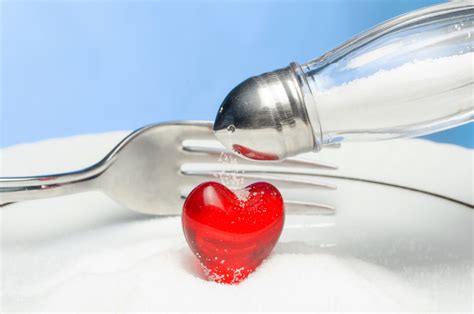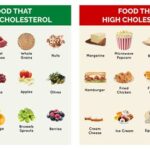
Consuming a single, excessively high-sodium meal can significantly impact cardiovascular health, with cardiologists cautioning against the common habit of drastically overdoing salt intake in one sitting, even if overall dietary habits are generally healthy. This spike in sodium can lead to immediate physiological changes, increasing the risk of heart-related issues, particularly for individuals with pre-existing conditions like hypertension.
Cardiologists emphasize that while maintaining a consistently healthy diet is crucial, a single excessively salty meal can negate some of those benefits, triggering a cascade of negative effects. According to Dr. Cheng-Han Chen, a board-certified interventional cardiologist and medical director of the Structural Heart Program at MemorialCare Heart and Vascular Institute at Long Beach Medical Center, as quoted in Yahoo Lifestyle, “When you ingest a large amount of sodium at once, the body tries to dilute this excess sodium by pulling water into the bloodstream.” This increased blood volume then places a greater burden on the heart and blood vessels.
The immediate consequences of a high-sodium meal include a temporary rise in blood pressure. While this might not be problematic for individuals with healthy blood pressure, it can be detrimental for those with hypertension or other cardiovascular vulnerabilities. Dr. Chen further explains that consistently exposing the heart and blood vessels to such sudden spikes can contribute to long-term damage. “The body is designed to try to get back to its normal baseline, but over time, these spikes may lead to chronically elevated blood pressure, which can then lead to heart disease, stroke, and kidney disease.”
Beyond the immediate impact on blood pressure, a high-sodium meal can also affect the kidneys. The kidneys play a vital role in regulating sodium levels in the body. When faced with a sudden surge of sodium, they work overtime to excrete the excess through urine. This process can be particularly taxing for individuals with kidney disease, potentially exacerbating their condition.
The source of high sodium intake is often attributed to processed and restaurant foods. These options frequently contain significantly higher levels of sodium compared to home-cooked meals. Restaurant chefs often use salt generously to enhance flavor, and processed food manufacturers rely on sodium as a preservative and flavor enhancer. Examples of culprits include fast food, frozen dinners, canned soups, and certain condiments. It is critical to read nutrition labels carefully to understand the sodium content of different foods and be mindful of serving sizes. Many people underestimate the sodium content in seemingly innocuous items, and portion sizes in restaurants often far exceed recommended serving sizes.
The American Heart Association recommends limiting sodium intake to no more than 2,300 milligrams per day for most adults, with an ideal limit of no more than 1,500 mg per day for those with high blood pressure. To put this into perspective, a single fast-food meal can easily exceed the daily recommended limit. A large order of fries, a burger with bacon and cheese, and a soda can pack well over 2,000 mg of sodium.
Mitigating the effects of an occasional high-sodium meal involves several strategies. Drinking plenty of water helps to flush out the excess sodium through urine. Engaging in physical activity can also aid in sodium excretion through sweat. Consuming potassium-rich foods, such as bananas, spinach, and sweet potatoes, can help to balance out the effects of sodium. Potassium helps to lower blood pressure by promoting sodium excretion and relaxing blood vessel walls.
However, these are merely temporary measures, and the best approach is to prevent excessive sodium intake in the first place. This involves cooking more meals at home, using fresh ingredients, and seasoning food with herbs and spices instead of salt. Reading nutrition labels carefully and choosing lower-sodium options when eating out or buying processed foods is also essential. Being mindful of portion sizes and avoiding adding extra salt to meals are other important strategies.
Furthermore, it is crucial to be aware of hidden sources of sodium. Many processed foods contain surprisingly high levels of sodium, even if they don’t taste particularly salty. Bread, cereals, and processed meats are common culprits. Reading the nutrition labels carefully and comparing different brands can help you make informed choices.
Individuals with pre-existing conditions, such as hypertension, heart failure, or kidney disease, should be particularly vigilant about their sodium intake. These conditions make them more vulnerable to the negative effects of high-sodium meals. They should work closely with their healthcare providers to develop a personalized dietary plan that includes strategies for limiting sodium intake.
Long-term adherence to a low-sodium diet can have significant benefits for cardiovascular health. It can help to lower blood pressure, reduce the risk of heart disease and stroke, and improve kidney function. A low-sodium diet can also help to prevent fluid retention and reduce symptoms of heart failure.
The key to maintaining a healthy sodium intake is to adopt a balanced and sustainable approach. This involves making gradual changes to your eating habits over time, rather than trying to make drastic changes overnight. It also involves finding healthy and flavorful alternatives to salt, such as herbs, spices, lemon juice, and vinegar. With a little effort and planning, it is possible to enjoy delicious and satisfying meals while keeping your sodium intake under control.
In conclusion, while indulging in an occasional treat is acceptable, consistently overdoing sodium intake in a single meal poses a risk to cardiovascular health. Awareness, moderation, and informed food choices are crucial for maintaining a healthy heart and overall well-being. The advice from cardiologists serves as a reminder to prioritize consistent dietary habits that support long-term health, rather than relying on occasional damage control.
Frequently Asked Questions (FAQs)
1. How does a high-sodium meal immediately affect my body?
A high-sodium meal causes your body to retain more water to dilute the excess sodium in your bloodstream. This leads to an increase in blood volume, which in turn puts extra strain on your heart and blood vessels. As Dr. Chen explained, “When you ingest a large amount of sodium at once, the body tries to dilute this excess sodium by pulling water into the bloodstream.” This results in a temporary rise in blood pressure. For individuals with pre-existing conditions like hypertension, this sudden spike can be particularly dangerous. The kidneys also have to work harder to filter out the excess sodium, which can be taxing, especially for those with kidney problems.
2. What types of food are most likely to contain high levels of sodium?
Processed and restaurant foods are the biggest culprits. Fast food, frozen dinners, canned soups, processed meats (like bacon, sausage, and deli meats), and many condiments are loaded with sodium. Even seemingly innocuous items like bread and cereals can contribute significantly to your daily sodium intake. Restaurant meals often contain excessive amounts of salt because chefs use it to enhance flavor. It’s vital to read nutrition labels carefully to understand the sodium content of different foods and be mindful of serving sizes, as restaurants often serve portions that far exceed recommended amounts.
3. What is the recommended daily sodium intake, and how can I track my intake effectively?
The American Heart Association recommends limiting sodium intake to no more than 2,300 milligrams per day for most adults. For those with high blood pressure, the ideal limit is no more than 1,500 mg per day. To track your intake effectively:
- Read Nutrition Labels: Always check the nutrition facts label on packaged foods to see the sodium content per serving. Pay attention to serving sizes, as the sodium content is often listed for a smaller portion than you might actually consume.
- Cook at Home: Prepare meals at home using fresh ingredients whenever possible. This gives you control over the amount of sodium added.
- Use Sodium Tracking Apps: Several mobile apps and websites allow you to log your food intake and track your sodium consumption throughout the day.
- Be Mindful of Restaurant Meals: When eating out, ask about the sodium content of dishes and request that your food be prepared with less salt.
- Review your Condiments: Check the sodium content of condiments, such as soy sauce, ketchup, and salad dressings. Opt for low-sodium versions when available.
4. What can I do to counteract the effects of a high-sodium meal if I accidentally consume one?
If you accidentally consume a high-sodium meal, there are several steps you can take to mitigate the effects:
- Drink Plenty of Water: Water helps to flush out the excess sodium through urine.
- Engage in Physical Activity: Exercise helps to excrete sodium through sweat.
- Consume Potassium-Rich Foods: Potassium helps to balance out the effects of sodium by promoting sodium excretion and relaxing blood vessel walls. Good sources of potassium include bananas, spinach, sweet potatoes, and avocados.
- Avoid Adding More Salt: For the rest of the day, be extra mindful of your sodium intake and avoid adding any extra salt to your meals.
- Monitor Your Blood Pressure: If you have high blood pressure, monitor it closely after a high-sodium meal and consult your doctor if it remains elevated.
Remember, these are only temporary measures. The best approach is to prevent excessive sodium intake in the first place.
5. Are there any long-term benefits of following a low-sodium diet, and how can I make it sustainable?
Yes, long-term adherence to a low-sodium diet has significant benefits for cardiovascular health:
- Lowers Blood Pressure: Reducing sodium intake helps lower blood pressure, reducing the risk of hypertension.
- Reduces Risk of Heart Disease and Stroke: By lowering blood pressure and reducing strain on the heart, a low-sodium diet can lower the risk of heart disease and stroke. As Dr. Chen stated, consistently elevated blood pressure can lead to “heart disease, stroke, and kidney disease.”
- Improves Kidney Function: Reducing sodium intake reduces the burden on the kidneys, improving their function.
- Prevents Fluid Retention: A low-sodium diet can help prevent fluid retention and reduce symptoms of heart failure.
To make a low-sodium diet sustainable:
- Make Gradual Changes: Don’t try to drastically change your eating habits overnight. Instead, make small, gradual changes over time.
- Find Healthy Alternatives to Salt: Experiment with herbs, spices, lemon juice, vinegar, and other flavorful ingredients to season your food instead of salt.
- Cook at Home More Often: This gives you greater control over the ingredients and sodium content of your meals.
- Read Nutrition Labels Carefully: Be aware of hidden sources of sodium in processed foods and choose lower-sodium options whenever possible.
- Plan Your Meals: Plan your meals in advance to ensure you have healthy, low-sodium options available.
- Seek Support: Consider working with a registered dietitian or healthcare provider to develop a personalized low-sodium meal plan.
By making these gradual and sustainable changes, you can enjoy delicious and satisfying meals while protecting your heart and overall health.
Detailed Analysis and Expanded Context:
The issue of high-sodium intake, particularly through isolated high-sodium meals, presents a significant public health concern due to its pervasive impact on cardiovascular health. While public health campaigns often focus on the importance of maintaining a balanced diet overall, the spotlight on the immediate effects of a single high-sodium meal is particularly relevant given the prevalence of restaurant dining and processed food consumption in modern society.
The physiological mechanisms behind the adverse effects of a high-sodium meal are well-documented. When a large amount of sodium is ingested, the body attempts to maintain osmotic balance by drawing water into the bloodstream. This increased blood volume directly elevates blood pressure, creating a strain on the heart and blood vessels. For individuals with pre-existing conditions like hypertension, heart failure, or kidney disease, this sudden increase in blood pressure can trigger a cascade of negative consequences, potentially leading to acute events such as heart attacks or strokes.
Moreover, the kidneys, responsible for regulating sodium levels, are forced to work overtime to excrete the excess sodium. This increased workload can be particularly harmful to individuals with compromised kidney function, potentially exacerbating their condition and leading to further complications. Over time, repeated exposure to such sodium spikes can contribute to chronic hypertension, a major risk factor for cardiovascular disease.
The sources of excessive sodium intake are diverse, but processed and restaurant foods are the primary contributors. Processed foods often contain high levels of sodium as a preservative, flavor enhancer, and texture modifier. Manufacturers often add sodium to extend shelf life, enhance palatability, and maintain the desired consistency of their products. Consequently, even foods that don’t taste particularly salty can contain surprisingly high levels of sodium.
Restaurant meals are another major source of sodium. Chefs often use salt liberally to enhance the flavor of their dishes, making them more appealing to consumers. Portion sizes in restaurants are often significantly larger than recommended serving sizes, further contributing to increased sodium intake. Additionally, many restaurant sauces and condiments are high in sodium, adding to the overall sodium load.
To mitigate the adverse effects of high-sodium meals, various strategies can be employed. Drinking plenty of water helps to flush out excess sodium through urine, reducing blood volume and alleviating strain on the heart and kidneys. Engaging in physical activity can also promote sodium excretion through sweat. Consuming potassium-rich foods, such as bananas, spinach, and sweet potatoes, helps to counteract the effects of sodium by promoting sodium excretion and relaxing blood vessel walls.
However, these are merely temporary measures, and the most effective approach is to prevent excessive sodium intake in the first place. This involves making conscious dietary choices, such as cooking more meals at home using fresh ingredients, reading nutrition labels carefully, and choosing lower-sodium options when eating out or buying processed foods. Seasoning food with herbs and spices instead of salt can also significantly reduce sodium intake without sacrificing flavor.
Furthermore, it is crucial to be aware of hidden sources of sodium in processed foods. Many products, such as bread, cereals, processed meats, and sauces, contain surprisingly high levels of sodium, even if they don’t taste particularly salty. Reading nutrition labels carefully and comparing different brands can help consumers make informed choices and select lower-sodium alternatives.
For individuals with pre-existing conditions such as hypertension, heart failure, or kidney disease, limiting sodium intake is particularly crucial. These conditions make them more vulnerable to the negative effects of high-sodium meals. Healthcare providers often recommend personalized dietary plans that include strategies for limiting sodium intake and managing related symptoms. Regular monitoring of blood pressure and kidney function is also essential for these individuals.
The long-term benefits of adhering to a low-sodium diet are substantial. Lowering blood pressure, reducing the risk of heart disease and stroke, and improving kidney function are among the key benefits. A low-sodium diet can also help prevent fluid retention and alleviate symptoms of heart failure. By adopting a balanced and sustainable approach to sodium intake, individuals can significantly improve their cardiovascular health and overall well-being.
In conclusion, while indulging in occasional treats is acceptable, consistently overdoing sodium intake in a single meal poses a significant risk to cardiovascular health. Awareness, moderation, and informed food choices are crucial for maintaining a healthy heart and promoting long-term well-being. The advice from cardiologists serves as a reminder to prioritize consistent dietary habits that support sustained health, rather than relying on occasional damage control. The message emphasizes the importance of proactive measures in managing sodium intake, promoting overall cardiovascular health, and preventing the long-term consequences associated with excessive sodium consumption.
The increased awareness of hidden sodium in foods encourages consumers to be more proactive in their food choices, leading to a more informed and healthy lifestyle. It also puts pressure on food manufacturers and restaurants to offer lower-sodium options, which in turn contributes to a healthier food environment for the general population. The ripple effect of such information is significant, impacting public health policies, dietary guidelines, and individual eating habits.
The constant reinforcement by healthcare professionals about the dangers of high-sodium intake further solidifies the message, making it more likely for individuals to adopt healthier dietary habits. This is particularly important in communities with higher rates of hypertension, heart disease, and kidney disease, where the adoption of a low-sodium diet can have a profound impact on health outcomes.
The continuous effort to educate the public about the importance of sodium management is an investment in the future, leading to a healthier, more resilient population. It empowers individuals to take control of their health and make informed decisions that benefit their long-term well-being. It is a concerted effort that requires ongoing commitment from healthcare providers, public health officials, food manufacturers, and individuals alike.
The evolving landscape of food labeling and public health messaging is critical in addressing this issue effectively. Clear, concise, and easily understandable nutrition labels are essential for empowering consumers to make informed choices. Public health campaigns must continue to raise awareness about the dangers of high-sodium intake and provide practical strategies for reducing sodium consumption.
The synergy between informed consumers, proactive healthcare providers, and responsible food manufacturers is key to creating a healthier food environment and reducing the burden of cardiovascular disease. It is a collective effort that requires ongoing collaboration and a shared commitment to promoting public health.









